Should TNB bear cost of EV ‘charge’?
By THE STAR | 02 November 2024
PETALING JAYA: When Puchong MP Yeo Bee Yin proposed that charging stations be treated as national grid assets, it made sense.
By having Tenaga Nasional Bhd (TNB) bear the installation costs, Yeo argued, Malaysia could more effectively support the growing presence of electric vehicles (EVs).
Since utility companies already manage power infrastructure, they are well-equipped to handle the growing demand that comes with EVs.
With TNB’s expertise in grid management and electricity distribution, charging stations could be efficiently placed where power access is most reliable. This strategic deployment would be crucial in balancing increased demand with grid stability, especially if the EV market expands.
Charging stations are unlikely to be profitable in rural or underserved areas, yet having TNB place them there would help ensure equitable access. Public investment from a major utility player could accelerate EV adoption by expanding infrastructure quickly and potentially reducing consumer costs.
Yet, TNB is a public-listed company with a mandate to deliver solid returns to its shareholders. Investing heavily in EV infrastructure, which has uncertain and potentially low returns, might not align with this duty.
TNB’s focus should be on high-yield infrastructure projects that align with its transition towards cleaner energy sources, like renewable energy developments.
Yeo suggests that TNB bear the cost of installing charging stations using its capital expenditure (capex).
She says the cost of setting up charging stations would only be 2.9% of TNB’s total capex for the Incentive Based Regulation spanning 2025-2027. All capex for the national grid infrastructure is included under the regulation’s framework and is a component used to set base electricity tariffs for Peninsular Malaysia.
She points out that in order to achieve the target of 10,000 charging stations nationwide, the country must build about 7,500 more stations, costing a total of around RM585mil.
But having national utility companies bear the cost is a big ask.
For now, many consumers may still hesitate to switch to EVs due to significant costs, such as the high expense of replacing EV batteries after their life expectancy.
These factors could delay widespread EV adoption, resulting in underutilised charging stations if the market doesn’t grow as quickly as expected, turning them into costly white elephants.
Investing in infrastructure that may take years to yield substantial returns could strain TNB’s resources and distract from its core priorities.
With only 2.6% of total vehicle sales attributed to EVs in the first half of 2024 (1H24), there’s a risk that the charging infrastructure would be underused and unprofitable.
Yes, EVs are gaining traction globally, including in Malaysia, though the pace varies by region but it’s unclear if growth will be sustained long enough to support large-scale charging infrastructure.
The first half of the year saw 10,664 EVs sold in Malaysia, marking a 148% increase compared with the same period in 2023.
This significant rise reflects increasing consumer interest, likely driven by environmental awareness, government incentives and a growing range of EV models.
The government is supporting EV adoption through tax incentives, subsidies and charging infrastructure development. These policies are intended to make EVs more accessible and to reduce greenhouse gas emissions.
But for TNB, the costs for installation, maintenance and power grid upgrades are significant, and covering them may strain utility budgets, potentially leading to higher electricity prices for consumers.
Some taxpayers may feel it’s unfair for utilities to bear costs for infrastructure that primarily benefits EV owners, especially in countries where EVs are still only accessible to certain income groups.
Furthermore, a utility company-led effort could discourage private sector participation. Private charging networks, like those from Tesla or ChargePoint, may hesitate to enter a market already dominated by publicly funded infrastructure.
Additionally, if government-owned utilities bear the entire cost, it may create dependency on public funds to sustain and expand the network. This could reduce the flexibility and innovation that private companies might bring.
Granted that EV adoption is a cleaner alternative to internal combustion engines.
However, the rise in demand for EV charging infrastructure would mean higher demand for electricity produced by TNB.
But TNB still generates the bulk of its power via coal, which is considered highly damaging to the environment, although it has been actively transitioning towards cleaner energy sources.
In 2023, TNB generated about 83% of its electricity from coal and natural gas, with coal contributing around 50.9% and natural gas 30.8% to the total generation mix.
Renewable energy sources, including hydro and solar, accounted for about 8.3% of the total electricity produced by TNB in the same year.
In summary, EVs are still a small portion of the market in Malaysia, making investing in infrastructure a non-viable venture for TNB.
In other parts of the world, many car manufacturers have stepped up, either individually or through partnerships, to develop charging networks.
Tesla, for instance, has created its own extensive Supercharger network, while others are joining forces to build shared networks, recognising that convenient charging is key to EV adoption.
Businesses and property owners, especially those with parking spaces, have an incentive to install chargers as amenities for tenants and customers.
This has led to a rise in chargers in office buildings, malls, hotels, and apartment complexes, often supported by government incentives.
Meanwhile, companies specialising in EV charging infrastructure, like ChargePoint, EVgo and Electrify America, have established networks that users access via memberships or pay-per-use. They often collaborate with other stakeholders to expand coverage.
Essentially, shared responsibility ensures widespread, accessible charging infrastructure that balances the needs of urban, suburban, and rural areas, ultimately supporting the transition to EVs.
This shared-cost approach not only balances the financial load but also encourages collaboration, helping the market grow while keeping electricity prices fair. — DOREENN LEONG
Tags
Autos News
Reviews
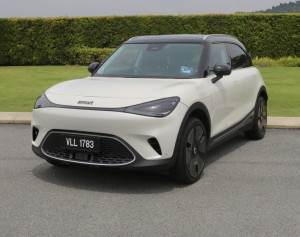
8.8
smart #1 (Premium): Agile, engaging, roomy, premium motoring

6.6
Suzuki V-Strom 250 SX: Multi terrain warrior
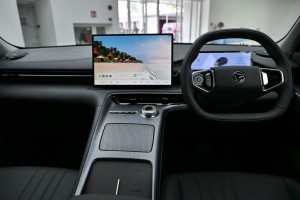
Proton e.MAS 7 impresses in quick dynamic driving exercises

Nissan Kicks e-Power: Kicking off a new efficiency
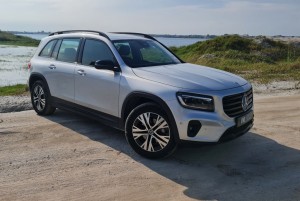
6.8
Mercedes-Benz GLB 200: Measured versatility
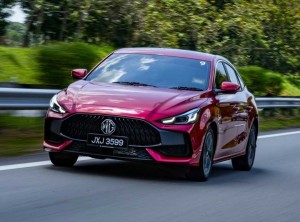
MG5: Slick and comfortable cruiser
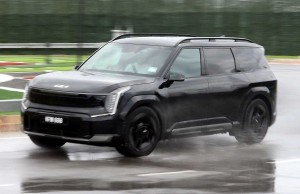
8.2
Kia EV9: Prime cut

8.0
Triumph Tiger 1200 GT Pro: High adventure on two wheels
Videos

The Snowball – Lamborghini’s Heartwarming Christmas Story of...

EVOGO battery swapping solution showcased at IAA Mobility 20...

Jaguar's Bold Type 00 Concept: A Glimpse into the Future of ...
